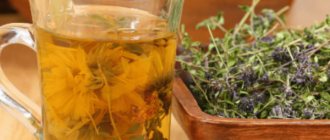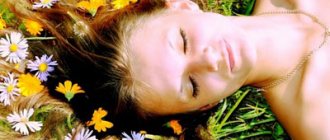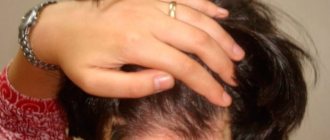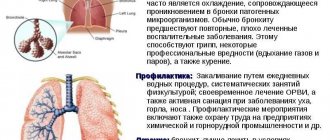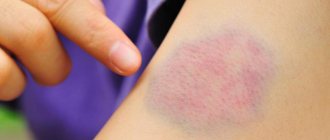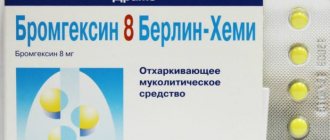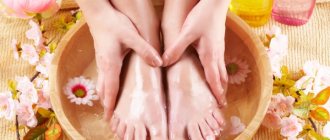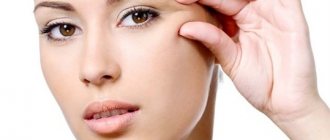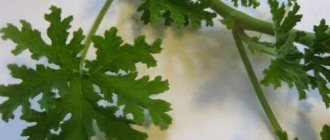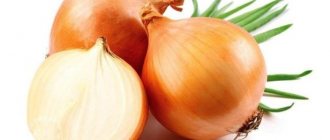Who doesn't want to have thick and healthy hair? It is impossible to find such people among female representatives. However, some external and internal factors lead precisely to the poor condition of our hair. They fall out or suffer from excessive dryness; in some, on the contrary, they become fat.
Today, it is quite possible to solve these problems even in natural home conditions; the main thing is to know some rules for caring for your own hair. Masks are considered the most affordable and common means for treating and caring for your own oily hair. Such products are aimed at reducing the secretion of sebum, which provokes such a nuisance as the necessary daily care for oily hair.
If you have oily hair, it quickly becomes dirty; the main reason for this is that the skin glands constantly secrete too much oil. Frequent hair washing does not help at all; on the contrary, the result only worsens, since as a result the sebum secretion only increases.
Advantages of folk remedies over purchased ones
Folk hair care products are distinguished primarily by their natural composition, ease of preparation and accessibility .
The best effect from using this type of product can be obtained through constant, regular use. Thanks to the soft, delicate influence of natural ingredients, the scalp and hair receive not only deep cleansing, but also nutrition, hydration, increased blood circulation and normalization of subcutaneous fat production.
Benefits of folk hair care products:
- safety;
- naturalness;
- availability;
- efficiency.
When using traditional products, hair and pores are not clogged with harmful sulfates, parabens, fragrances and various types of dyes and fragrances.
Many modern hair care products negatively affect the condition of the hair and scalp. In addition, they tend to accumulate in the body, which can lead to various health problems .
Folk remedies, in turn, are not inferior in effectiveness to many modern remedies , without having a destructive effect on the hair structure and the condition of the scalp.
Combating seborrheic dermatitis of the scalp
There are several available ways to get rid of seborrheic dermatitis at home.
Diet
If you have seborrhea of the scalp, you need to eat right and also follow a number of recommendations:
- Eliminate fried, smoked, salty and fatty foods from your diet.
- Do not consume confectionery products.
- Limit consumption of foods containing artificial colors and additives.
- Remove fast food and carbonated drinks from the menu.
- Do not eat foods that can cause an individual allergic reaction. It could be honey, citrus fruits, exotic fruits, raspberries, strawberries.
- Do not drink strong alcoholic drinks.
- Limit consumption of flour products.
The menu of a person suffering from seborrheic dermatitis must include fresh vegetables, berries, fruits , dairy products, fish, and lean meat. It is very healthy to eat cereal porridge, vegetable salads, fruit juices, herbal teas and mineral water.
Important!
If you have seborrhea of the skin, you should drink a lot of water, at least two liters per day. Water helps remove toxins from the body and normalize metabolism.
Drug therapy depending on the form of dermatitis
Before treating seborrhea, it is necessary to establish the cause of the disease. To do this, you need to visit a dermatologist, endocrinologist, gastroenterologist , and in some cases a psychotherapist. Drug therapy is prescribed only after examination and depends on the factors that led to the disease.
The following drugs are used to treat seborrheic dermatitis:
- Ketoconazole. Available in tablet form. The active ingredient is ketoconazole. Antifungal agent. Used for dermatitis, skin infections, and dandruff. The medication is contraindicated in case of hypersensitivity of the body. Available in pharmacies only with a doctor's prescription.
- Diflucan. Capsules for oral administration. The active substance is fluconazole. Antifungal medicine. Used to treat dermatitis. Contraindicated in children under 3 years of age.
- Novo-Passit. A sedative pharmaceutical product based on medicinal herbs. Available in tablet and liquid form. Used in the treatment of seborrhea resulting from stress.
- Diprospan. Suspension for injection. Refers to glucocorticosteroids. The medication is used in cases of exacerbation of seborrheic dermatitis due to hormonal imbalance.
- Cetrin. Release form: tablets. Active ingredient: cetirizine dihydrochloride. Effectively relieves skin itching. The drug is contraindicated in pregnant and lactating women.
Important!
If side effects occur during treatment, you should immediately stop taking the medication and consult a doctor.
Medicinal shampoos
To eliminate seborrhea of the scalp, special shampoos are used, which are sold in pharmacies without a doctor’s prescription:
- Friederm Zink. Suitable for dry hair. Contains zinc in pyrithione. Relieves dandruff, itchy skin, prevents hair loss.
- Sulsena. The active component in the composition is selenium disulfide. The product helps eliminate dandruff, prevents skin flaking, and restores the normal functioning of the sebaceous glands.
- Algopix. The shampoo can be used for dry and oily skin seborrhea. The product contains juniper tar, green algae extract and salicylic acid. It has an anti-inflammatory effect, eliminates itching and dandruff.
- Nizoral. Contains ketoconazole. The product prevents the growth of fungi that contribute to the development of seborrhea. Quickly eliminates dandruff, itchy skin, flaking, normalizes hair condition and reduces inflammation.
- Sebiprox. The shampoo contains ciclopiroxolamine. Effectively removes dandruff, has antibacterial, antifungal and anti-inflammatory effects. The product has a comprehensive effect and helps to quickly get rid of seborrheic dermatitis.
To achieve maximum effect in the treatment of seborrhea, it is necessary to use shampoo correctly . It should be applied to damp hair and rinsed off only after 3-5 minutes. Re-application is required. You need to wash your hair with medicated shampoo twice a week for 1–2 months.
Balms against seborrheic dermatitis
Recovery from seborrhea will come faster if, after using shampoo, you rinse your hair with special balms, namely:
- Tavitin. Contains nettle and horsetail extracts, as well as sandalwood oil. Restores the function of the sebaceous glands, relieves irritation and itching of the skin, and prevents the occurrence of dandruff. The product has a cleansing, anti-inflammatory, moisturizing and antiseptic effect.
- Cynovitis. Developed on the basis of an innovative formula, contains climbazole and zinc pyrithione. The product is intended to eliminate dandruff and excessive oiliness of the scalp. Restores hair structure and prevents hair loss.
- Baliss. The composition contains ginger extract and ginseng root. The balm normalizes the condition of the skin, eliminates dandruff, restores damaged hair and strengthens its roots.
- Bio Arctic. Contains a natural antiseptic - Siberian moss extract. Prevents inflammation on the scalp, removes dandruff, irritation and itching.
- Salvia. The main active ingredients in the composition are wormwood extract and zincomadine. The product actively affects fungi that affect the scalp, resulting in the disappearance of dandruff and itching.
Important!
To achieve a therapeutic effect, it is not recommended to rinse the balm from your hair for 3-5 minutes.
Ointments and creams
In the treatment of seborrhea, special creams and ointments are used that are applied to the affected scalp:
- Mycozoral. The active ingredient is ketoconazole. The ointment actively affects yeast-like fungi that cause seborrheic dermatitis. With daily use, dandruff, skin flaking and itching disappear.
- Skin Cap. Cream with zinc pyrithione. Moisturizes the skin, prevents peeling, inflammation, itching, and destroys bacteria. Apply to the skin morning and evening daily for 1-1.5 months.
- Ketodin. Active ingredient: ketoconazole. Antifungal cream that quickly eliminates flaking, itchy skin and dandruff.
- Zinc ointment. Ingredients: Vaseline and zinc oxide. Antiseptic, anti-inflammatory agent with a drying effect. Apply four times during the day. The course of treatment is from one to two months.
- Sebozol. Ointment with ketoconazole. Apply 2 times a day. The course of treatment lasts 15–30 days.
Important!
Before using ointments and creams, it is recommended to study the instructions supplied with them and take into account contraindications.
Lotions
Special lotions help cure seborrheic dermatitis:
- Belosalik. The active ingredients are salicylic acid and betamethasone. A combined agent with keratolytic and anti-inflammatory effects. Prevents the development of bacterial and fungal infections. Soothes itching, flaking, and also gets rid of dandruff. Apply to the scalp 2 times a day for 4 weeks. It is not recommended to use the lotion for children under one year of age, pregnant and lactating women.
- Bacter. The composition contains tea tree oil, burdock extract, cypress, castor oil, citric acid. The product relieves itching, redness, and irritation. Has antiseptic and anti-inflammatory effects. The balm reduces skin oiliness, prevents baldness, and stimulates intensive hair growth.
- Diprosalik. Contains betamethasone and salicylic acid. Effectively eliminates seborrheic dermatitis. Contraindicated during pregnancy and lactation. Not recommended for children under two years of age.
- Biffon. Active ingredient: bifonazole. Neutralizes fungal infections, removes dandruff, and moisturizes the skin. Suitable for the treatment of dry seborrhea.
- Losterine. The balm contains Sophora extract, dexpanthenol, almond oil, naphthalan. Has anti-inflammatory effects. Destroys germs, relieves itching, eliminates dandruff, strengthens hair. Does not contain dyes, hormones or fragrances. Suitable for frequent use.
Folk remedies
Folk remedies that can be easily prepared at home are also effective for treating seborrhea.
Herbal infusion
Mix nettle, plantain, oregano and chamomile in equal proportions. Take a tablespoon of the mixture and pour boiling water (1 cup). Leave for an hour. Add black bread crumb to the infusion. Rub the prepared warm paste into the skin and cover your head with a plastic cap for two hours.
At the end of the procedure, rinse your hair with water. Herbal infusion restores hair and prevents hair loss, and also eliminates dandruff. After using the product, itching, inflammation, and peeling of the skin disappear.
Lavender oil
Lavender essential oil should be rubbed into the scalp and left for one hour. After exposure, wash hair with water and shampoo. The oil eliminates oily skin and gets rid of dandruff. The treatment procedure is recommended to be carried out 3 times a week for a month.
Garlic and onion
Grate the onion and three cloves of garlic. Mix the ingredients, then add a tablespoon of burdock oil. Apply the composition to the skin after washing your hair and put on a waterproof cap. After half an hour, rinse your hair with clean water. Repeat the procedure every week for 2 months.
Tar soap
Wash your hair with regular shampoo, then lather with tar soap. Do not rinse for 15 minutes. Next, wash your hair with water and dry naturally. It is recommended to use the product no more than twice a week. Duration of treatment: one month.
St. John's wort tincture
Pour a tablespoon of herb with vodka (100 ml). If 70% alcohol is used, then you need to take 50 ml. Seal the container tightly and leave to infuse in a dark place at room temperature. After a week, the finished product can be rubbed into the scalp.
Kefir
Regular kefir works well against dandruff. It must be applied 30 minutes before washing your hair. To enhance the therapeutic effect, you should put a waterproof cap on your hair and wrap it in a warm towel. If you do a kefir mask every three days, then dandruff will disappear within a month.
Masks for hair and scalp
Masks made from natural ingredients are excellent for getting rid of seborrheic dermatitis. They have a beneficial effect on the scalp , eliminate dandruff, and help restore and strengthen damaged hair.
Garlic-burdock
To prepare the mask, you need to mix 100 ml of burdock oil and two crushed cloves of garlic. The oil can be slightly warmed up beforehand.
Apply the finished mixture to the scalp and leave for 20 minutes. After exposure, rinse off the composition with warm water and wash your hair with shampoo. Garlic-burdock mask should be applied 2 times a week . The course of treatment lasts 8 weeks.
Tea tree oil
The product is applied to the affected skin with massaging movements. After rubbing in the oil, your head should be covered with polyethylene and wrapped in a warm towel.
The exposure time of the mask is 30 minutes. At the end of the procedure, you need to thoroughly wash your hair with water and shampoo . Tea tree oil masks should be done every four days for 2 months.
Tar and burdock
Mix liquid birch tar and burdock concentrate in equal proportions. Apply the resulting composition to the scalp and distribute through the hair.
To enhance the therapeutic effect, put on a plastic cap and wrap your head in a terry towel. After 30 minutes, the mask should be washed off with water and shampoo. The procedure must be carried out 2 times a week. Depending on the complexity of the disease, the course of treatment can last up to two months.
TOP best folk recipes for cooking at home
The most popular and effective folk remedies against oily hair are the following products:
- Starch from fat content . Often used as a dry shampoo and for making masks that reduce oiliness.
- As a dry shampoo, sprinkle the roots of the hair with potato starch, then comb it out or shake off the starch powder with your fingers , then lightly dry the curls with a hairdryer, turning on the cool mode.
- To use starch as a mask against fat, you need to take one teaspoon of crushed currant, raspberry or mint leaves , adding sequentially 2 tablespoons of starch and 2 tablespoons of natural cream. Mix everything well and apply to hair for 20-30 minutes. It is recommended to wear a cellophane cap and a towel on your head for insulation.
- Talc is used to quickly eliminate excess oil, absorbing sebaceous secretions in a matter of minutes. To carry out this procedure, you will need to part your hair and lightly sprinkle the hair roots and skin with talcum powder, then comb out thoroughly.
- Anti-oil flour works in a similar way, absorbing excess sebum and cleansing hair, leaving it looking fresher and cleaner. Apply a couple of pinches of flour to oily hair roots and shiny scalp, then remove the flour with a comb or a low-heat hair dryer. It is important not to overdo the amount of flour, otherwise it will be very difficult to remove.
- Baby powder is often used as an express remedy to eliminate excess greasiness and give hair a fresh look and volume. Suitable for cases where there is no time or opportunity to wash your hair. a couple of pinches of baby powder evenly over the skin and roots of the hair, then comb out the powder and make a not very tight hairstyle.
- Cocoa is a universal remedy that effectively eliminates the problem of oily hair, used as masks or dry shampoo. Important note: cocoa, due to its rich brown color, is recommended for use on dark hair .
- To prepare a cocoa mask for oily , you need to mix 1/4 cup warm milk , a couple of tablespoons of natural cocoa without additives, a couple drops of essential oil (lavender, mint, bergamot, lemon or grapefruit) and one tablespoon coconut oil. Thanks to this procedure, the curls will be saturated with beneficial substances contained in the oils, and cocoa will help get rid of fat.
- To use cocoa as a dry shampoo , you need to distribute a pinch of natural powder over the skin with massaging movements. Regular use of this product not only visually cleanses the hair, but also normalizes the secretion of sebum. You can use cocoa dry shampoo as it gets dirty, but not more than once every 4 days .
- Salt has long been famous for its antiseptic, disinfectant and antimicrobial properties, which is why it is used, among other things, to get rid of excess oiliness. The main purpose of salt in hair care is peeling. It is important to make sure before using this product that there are no injuries to the skin - any irritation, wounds, scratches and cracks are a contraindication. Directions for use : Rub crushed salt into the scalp for about 3 minutes, then rinse with mild shampoo. You can mix salt powder with water, kefir or milk.
- Vinegar for oily hair is rightfully considered one of the most useful ingredients in the fight against this problem. A common and effective homemade remedy is a vinegar rinse: dilute 1-2 tablespoons of vinegar in a liter of boiled water and regularly rinse your hair with this liquid after washing . As a result, oiliness is eliminated, hair is strengthened, and the hair looks healthy, shiny and voluminous.
- soda exfoliates, disinfects, softens and soothes the scalp well, so its use as a hair care product is quite justified. One way to use this product is to wash your hair with baking soda, adding it directly to a mild, safe shampoo or diluting it with water. This method is recommended to be used no more than 2 times a month , since soda has a strong drying effect, which can force the sebaceous glands to work harder. After washing your hair with soda, it is advisable to use a rinse with vinegar.
- Colorless henna perfectly combats the problem of increased oiliness, while giving shine and volume to the hair. To prepare a cleansing mask, colorless henna must be diluted with warm boiled water to the consistency of not too thick sour cream, then applied to the hair roots and the hair itself. If the ends of your curls are prone to dryness, it is advisable to add a couple of drops of oil to the mixture to soften. Wrap your head in a towel, after putting on a bath cap. After 20 minutes, rinse with mild shampoo. Be sure to use a moisturizing balm after using the mask.
- Alcohol. Rubbing dirty hair strands with alcohol diluted 1:1 with water will help get rid of oily shine. For greater effect, you can add a couple of drops of lemon juice to the alcohol-water liquid.
- Honey. Honey hair masks perfectly disinfect the skin, cleanse the curls and nourish them with beneficial microelements. In addition, honey has a regenerating and calming effect. An effective anti-fat mask with honey: mix melted honey with egg yolks in the proportion of 2 tablespoons of honey to 2 yolks. Mix, apply to skin and entire length of hair, put on a cellophane cap and cover your head with a towel . This mask can be left on all night, rinsing off in the morning with a mild sulfate-free shampoo.
- Apple cider vinegar reduces greasiness, gives shine and softness to hair. A universal recipe for a rinse for oily hair with apple cider vinegar: mix half a glass of apple cider vinegar and a few drops of essential oil (lavender, mint, lemon) in a liter of boiled water. Rinse your hair with the mixture after washing once a week.
- Burdock oil is rich in vitamins and beneficial microelements, so it is often used in cosmetology and hair care. Recipe for a mask with burdock oil for hair that is prone to rapid contamination and greasy hair: mix one tablespoon of burdock oil and the pulp of a citrus fruit (grapefruit or lemon), add 1 teaspoon of grape seed oil and 5-7 drops of essential oil (lemon, grapefruit, mint or lavender). Massage the resulting mixture into the skin and hair roots, leaving the mask for 30 minutes, then rinse with a mild cleanser.
- Oak bark removes oily shine and excessive greasiness well, preventing hair breakage and strengthening it. To prepare an oak bark rinse, you will need to boil 2 tablespoons of oak bark in two liters of water for 10-15 minutes You can do this in a water bath. For greater effectiveness, you can add one tablespoon of dry medicinal herbs to the boiling mixture : nettle, plantain. Leave the resulting liquid for about half an hour , then rinse your hair with it.
Folk remedies are aimed not only at eliminating excess greasiness of the scalp and hair, but also at improving the health of curls in general, stimulating blood circulation and growth.
Egg
The yolk of this product contains substances that help regulate the oiliness of the scalp. Protein will help with this. The egg nourishes the hair, so it will give oily hair health and a chance to be beautiful. We recommend strengthening entrance door openings.
- Beat the raw egg yolk with a teaspoon of water and cognac (you need the same amount as water). Apply to all hair.
- Egg whites (2 pcs.) are turned into strong foam and rubbed into the hair. Wash off after it dries.
- You can mix the protein with a strong infusion of chamomile and rub it into your hair as a mask. Chamomile is infused for about 4 hours. There is no need to wash off such a mask with too hot water - the protein will coagulate and will not be washed off well. This mask seems to be made for oily hair.
- Egg whites are also added to the yeast mask. A tablespoon of yeast is poured with the same amount of boiling water and one protein is added. Rub into hair and do not rinse until completely dry.
- A mask of 2 egg yolks and 2 tablespoons of honey is applied overnight and kept under a cap and film. Wash off in the morning.
- Egg yolk can be mixed with camphor oil (tbsp) and water (teaspoon). The mask is applied to the very roots and washed off after 5 minutes.
Sea buckthorn oil is a storehouse of useful substances. It helps fight various scalp diseases and dandruff. A hair mask with sea buckthorn oil will help keep your hair alive and healthy. Recipes for masks and useful tips for use can be found on our website.
You will find folk remedies for stimulating hair growth here. Ginger, cognac, mustard and other products for long hair.
Homemade mayonnaise is a vitamin bomb for hair. In this article you will find recipes for mayonnaise-based masks for all hair types. Read reviews from real people about the application.
Tinctures and decoctions to eliminate oily hair
To strengthen hair and normalize the production of subcutaneous fat, it is advisable to use natural tinctures and decoctions suitable for oily hair type.
- Rinsing with nettle helps reduce oiliness by drying the skin and nourishing the hair follicles with vitamins contained in large quantities in this plant.
- Preparation of a nettle decoction for rinsing : pour 100 grams of nettle with one liter of boiling water and simmer over low heat for about 30 minutes, then cool, strain and use as needed.
- Nettle tincture against greasiness of hair is prepared as follows : pour 100 grams of nettle with a liter of boiling water, cover and leave for about an hour, then strain into a convenient container and use as a rinse after washing your hair.
- Ginseng tincture in combination with eleutherococcus tincture will relieve excess oiliness of the scalp and make hair more manageable, soft and shiny . The recipe is simple: mix 1 tablespoon of ginseng tincture with 1 tablespoon of eleutherococcus and gently rub the resulting mixture into the hair roots. After 30 minutes, rinse off with warm water or mild shampoo.
- Calendula gives freshness to hair prone to oiliness, protects against baldness and promotes hair growth. To use this product, you need to dilute 3 tablespoons of calendula in one liter of water , pour the beneficial liquid into a small basin and keep your hair in this tincture for about 5 minutes.
- Lemon in combination with aloe perfectly cleanses the scalp and nourishes the hair follicles . To prepare this mask you will need: a couple of tablespoons of lemon juice mixed with a couple of tablespoons of aloe juice. After slightly diluting the resulting juice with water for ease of application, rub it into the scalp. This product is used before washing your hair.
Regular use of natural tinctures and decoctions will make your hair fresher, stronger and healthier.
Green and blue clay
They adsorb fat, care for hair, making it healthier and giving it microelements and vitamins (after all, oily hair also needs nutrition!). It is better to make clay masks against oily hair at home up to 2 times a week.
- Green clay. 2 tablespoons are diluted with the same amount of decoction of St. John's wort, oak bark or nettle. You can add a spoon of apple cider vinegar. After stirring, rub into hair and scalp. Keep for 30 minutes with a towel.
- Blue clay. A couple of tablespoons are diluted with herbal decoction so that the gruel is thick. Add grated garlic and lemon juice (20 ml). Distribute over roots and hair, leave for 30 minutes.
Folk remedies for washing oily hair
Natural traditional products are also used for washing hair, delicately cleansing and toning curls.
- Lavender oil , when added to a safe shampoo, eliminates sebaceous impurities, oily shine and gently dries the hair roots, while preventing excessive dryness. By nourishing the scalp, lavender oil becomes an indispensable aid in the fight against oiliness.
- Tar soap quite effectively cleanses dirty hair, eliminating grease and oily shine. It should be used as follows: after thoroughly washing your hands with tar soap, apply the resulting foam to the hair, roots and scalp with massaging movements, then rinse. If necessary, repeat the procedure. There won't be as much soap suds as when using regular shampoo, but your hair will be perfectly cleaned.
- Salt in shampoo . Adding a pinch of crushed salt to a soft, natural sulfate-free shampoo will deeply cleanse the skin, while simultaneously exfoliating the scalp.
Using folk remedies while washing your hair, the hair is deeply cleansed and nourished, and in combination with a suitable shampoo, a double effect occurs, aimed at eliminating greasiness and reducing the production of subcutaneous fat.
Measures to prevent excess oily hair
Before you start using any product to eliminate and combat excessive oily hair, it is important to determine its cause. Otherwise, the treatment will not have any effect or will only act at the time of use of this or that remedy. The most common causes of oily hair in women:
- increased activity of the glands of the scalp;
- lipid imbalance;
- hormonal imbalances;
- problems with the thyroid gland;
- problems with the gastrointestinal tract;
- long-term use of certain medications, such as antibiotics;
- eating unhealthy foods - fatty, fried, spicy, salty;
- improperly selected hair care, including shampoos, conditioners, masks, sprays, hair oils that are contraindicated for this hair type;
- seboric dermatitis;
- stressful situations;
- pregnancy;
- menopause;
- irregular hair washing;
- poor quality of water used for washing, hard water is especially harmful;
- frequent or incorrect coloring, use of low-quality products during procedures at the hairdresser;
- Synthetic hats can also cause excessive oiliness in your hair.
Violations of lipid metabolism and increased activity of the sebaceous glands, as a rule, are closely related to each other and follow from one another. They are the main cause of oily hair as a result of some disease, or improper lifestyle, nutrition or care.
To establish the exact cause, it is recommended to visit a specialist and, if necessary, carry out the prescribed examinations.[flat_ab id=”19"]
First of all, increased sebaceousness is caused by the accumulation of natural secretion from the sebaceous glands located in the scalp. It is characterized by the continuous production of natural lubricant on the skin.
In addition, oily hair is the result of excessive consumption of carbohydrates, fats and starches. It can also be caused by poor personal hygiene, which leads to an increase in the amount of sebum.
Other factors include the following:
- Hormones. Androgen activates the sebaceous glands. Its level in the body can increase as a result of stress. As a rule, such changes occur during adolescence or due to obesity. Therefore, overweight people and teenagers often have hair that becomes greasy very quickly.
- Heredity. Genetics plays an important role in the occurrence of disorders in the production of sebaceous secretions. In this case, it is impossible to completely get rid of the problem. All that remains is to accept it and minimize it.
- Contraceptives. Hormonal changes in the body are caused by contraceptives, the use of which provokes excessive production of sebum.
- External influences. Paradoxically, careful and consistent hair care can have the opposite effect. Using a hair dryer or styling products damages the strands. As a defensive reaction, the active production of secretion begins - the curls become excessively greasy at the roots, and the ends remain dried out.
- Wrong diet. Excessive activity of the sebaceous glands can be caused by eating foods containing high amounts of fat, salt and sugar. Metabolic deterioration, liver disease, and dysfunction of the gastrointestinal tract are common causes of increased secretion. Those with oily hair should avoid smoked foods, coffee and alcohol.
- Stimulation. Massaging the scalp and combing your hair too often contribute to the secretion of sebum.
If the sebaceous glands located in the scalp intensively produce fat (lard), then the hair very quickly becomes oily.
This phenomenon is commonly called seborrhea, which can lead to the death of hair follicles and baldness. Therefore, if you do not take timely measures and start treating oily hair, you can, over time, lose your natural beauty.
A number of factors lead to seborrhea:
- Human hormonal disorders.
- Disturbances in the functioning of the nervous system.
- Poor nutrition.
- Taking certain medications.
- Using hard water when washing your hair.
- Incorrectly selected or used care products.
- Very frequent and incorrect coloring using low-quality products.
- Lack of protection during exposure to the sun, cold and solarium.
As a rule, when any disease occurs, all a person’s efforts are aimed at healing, but no one cares at all about their hair, believing that what is given by nature will not go anywhere.
This situation can also provoke the appearance of seborrhea, which requires immediate treatment.
One of the most important preventive measures is normalizing the diet. If fatty and spicy foods predominate in it, the excretory system begins to work harder, trying to remove substances that are harmful to health from the body. The sebaceous glands are an integral part of this system. They also become involved in the cleansing process and begin to produce a significantly larger amount of secretion.
There are a few more points to pay attention to:
- giving up bad habits that cause slagging and intoxication of the body;
- timely treatment of depressive conditions that can cause hormonal imbalance;
- taking care of your health: regular diagnostic examinations in order to identify deviations from the norm at the initial stage of their development.
One of the factors that provokes increased oily hair is excess weight. Fighting it is also an effective preventative measure.
Oils against oily hair
If the sebaceous glands are overactive, you need to use oils very carefully , as some of them can increase oil content.
Oils used for problems with oily hair:
- Olive oil is suitable for combating excess fat. To do this, mix two tablespoons of olive oil with four drops of lavender essential oil and apply for 15 minutes along the entire length of the hair. Wash off with shampoo without aggressive ingredients and rinse with vinegar, or add a few drops of lemon juice to the rinse water.
- argan oil strengthens and nourishes curls, moisturizes the scalp and protects against UV rays. Argan oil can be added to natural shampoo or used in its pure form, applied to hair and skin with rubbing movements. Frequency of use for curls prone to oiliness – no more than 1 time per week.
- Coconut oil is widely used as a base oil in masks for oily hair. It is also used in its pure form, applied to the entire length of the hair and left overnight. Sometimes coconut oil is mixed with a couple of drops of lavender, peppermint or lemon essential oil.
Important. Before using any oil, it is recommended to warm it slightly by placing the bottle under running hot water.
Rules for preparing homemade masks for oily hair
What to do with oily hair? Natural compounds will help solve the problem. By following simple recommendations, it is easy to care for your curls:
- Cook exclusively in ceramic or clay dishes to avoid the oxidation process;
- Be sure to check the composition of the mask for a reaction before treating the scalp;
- The surface of the epidermis should be free from cracks and damage;
- Rinse off with warm water so as not to further increase the secretion of the glands;
- If the hair is oily at the roots and the ends are dry, the mask is used only on the root area, sections are separately treated with a nourishing balm.
Tips for using homemade masks
If your curls have become oily, you should use restorative cosmetic products once a week. A properly selected shampoo should be combined with a balm, which is applied to the main growth area and to the ends.
The main recommendations are:
- to reduce greasiness, you can use decoctions of chamomile, nettle, dandelion, coltsfoot or dry shampoo;
- clay, henna, cereal and potato starch perfectly dry, make curls lush and voluminous;
- to enhance the effect, an insulating cap is widely used;
- carry out healing procedures up to two times a week;
- Before washing with shampoo or applying a mask, massage the scalp.
Useful video: How did I get rid of oily hair?
Oily hair - what to do, professional help
You should not delay visiting your doctor for professional advice. You will have to undergo an examination to identify possible systemic lesions that could cause excessive activity of the sebaceous glands.
In some cases, you will need to visit a gastroenterologist, a specialist in endocrine diseases, a dermatologist, or a trichologist.
In the arsenal of doctors there will be the necessary medicines, as well as physiotherapeutic procedures.
Mesotherapy
A procedure involving the injection of a special mixture (the so-called mesotherapy cocktail) into the scalp. It consists of medications, agents to inhibit the sebaceous glands, vitamins, and minerals.
This involves the use of special needles, which is unacceptable for some people. Exposure time – 20-60 minutes. The course is designed for 5-10 procedures.
Ozone therapy
A similar procedure in which an oxygen-ozone mixture is introduced. It is usually prescribed in combination with mesotherapy. For those who cannot stand needles, there is another variety.
In this case, the composition is applied to the scalp and covered with a device, which, by creating a greenhouse effect, ensures the penetration of the ozonizing mixture into the skin.
This procedure helps improve blood supply to the skin, saturate its deep layers with oxygen, and reduce sebaceous secretions. The course is designed for 5-10 sessions of 15-20 minutes each. It is imperative to observe time intervals between visits, the frequency of which is determined individually.
Cryotherapy
The good thing is that there are no contraindications for its implementation. This procedure involves the use of liquid nitrogen to inhibit the activity of the skin glands. Processing is done using an applicator. Session duration is up to ten minutes. The procedural course is designed for 15 visits with an interval of 2-3 days.
Laser shower
Impact on the scalp with quantum laser energy. This painless procedure has a healing effect, helps improve hair structure, and normalizes the activity of the sebaceous glands. Sessions can be held every other day. The duration of exposure is about 10 minutes.
Darsonval
Treatment with alternating current pulses using a special device. In this case, a number of physical and chemical changes in tissues are observed. Pores narrow, and the production of lipid compounds decreases. The procedure is used to treat oily hair, fight dandruff, and inflammation. The course of treatment should consist of at least 10 procedures. If you have the opportunity to purchase a device, you can treat yourself at home.
Plasma therapy
Injection of plasma under the skin. First, blood is collected, which is subject to special processing. Vitamin and medicinal supplements may be added to the finished plasma. The method of administration is the same as for mesotherapy. The principle of operation of this procedure is to activate the mechanisms of self-healing and self-regulation of the skin. It is necessary to undergo 3-4 sessions (a few minutes each) with an interval of 10-15 days.
It should be borne in mind that all treatment procedures must be carried out in strict compliance with technologies, dosages, intervals between visits, principles of sterility and safety precautions.
A harmonious combination of properly selected care, drug treatment and traditional medicine will certainly give the expected result.
Of course, it is unlikely that your hair will suddenly become normal or dry, but it will no longer be a source of trouble and will be healthier, more attractive and manageable.
You just need to be patient and initially be prepared for the fact that the set of selected activities will need to be carried out regularly throughout your life.
Features of home care
Increased sebum production has long been considered a hair disease, the treatment of which should begin with the selection of the necessary care products. They are designed not only to improve the visible condition, but also to radically solve the problem.
However, first you need to get rid of the misconception that frequent washing is harmful. This is wrong! Washing should be carried out every time it is required, that is, as it gets dirty. It is very good if for these purposes you use a special soap that has a healing effect - “Tar”, “Sulfur” or “Bornoe”.
You can and should use special series of products that are produced by almost every company specializing in hair care products. As a rule, such products have the necessary composition for seborrhea.
| Name of the product | What is it for? | Company manufacturer |
| Shampoo Equilibre | Normalizes the functioning of the glands | Selective Professional. Italy |
| Bio-Balance Shampoo | Improves hair condition | Selective Professional. Italy |
| Shampoo | For long and voluminous hair with high oil content | London. Germany |
| Shampoo with tar | Regulates sebum production | KEUNE. Holland |
These professional hair treatment products are good because they are available to everyone and should be used like regular shampoos - at home. At the same time, their peculiarity should be taken into account - at the beginning of use, the work of the glands, on the contrary, will intensify even more and this process will take approximately 2-3 weeks. Then it returns to normal, and the general condition improves significantly.
For fans of traditional medicine and its remedies, we can also offer a number of recommendations that can solve the problem of oily hair and normalize the functioning of the sebaceous glands.
Treatment of oily hair with folk remedies allows not only to normalize the functioning of the glands and improve the condition of the hair, but can also serve as an excellent prevention of seborrhea.
We invite you to read: Blue mood color: how to make blue strands on dark hair
| Means | What to do | How it works |
| Tincture of calendula | Rub into scalp after washing | Normalizes the functioning of the glands |
| Castor oil | Rub into scalp before washing (30 minutes before) | Relieves itching, reduces sebum production |
| Cherry juice (natural) | Rub into scalp before washing (only for dark hair, as it has the ability to color hair, 30 minutes before) | Regulates the functioning of the glands |
| Infusions of coltsfoot, nettle, plantain, St. John's wort, sage, oak bark | Rinse washed hair, do not rinse | Normalize the functioning of the glands |
| Bodyaga | A mask based on a boric acid solution is thoroughly and long rubbed into the surface of the scalp before washing (30 minutes before) | Reduces sebum secretion and dandruff, relieves itching |
The peculiarity of all folk remedies for the treatment of oily hair is that they quickly lead to the desired result, but for its final consolidation, they need to be used for a long time (1-2 months).
Before the advent of modern cosmetics, women and men got rid of excess oily scalp and hair with the help of flour, potato, and later corn starch. These products acted as a concealer and cleanser. Starch and flour were applied to the skin and hair. The fat was absorbed, after which the head was combed with a fine comb. This is how they removed dandruff, seborrheic scales, and cleansed their hair.
This method is still relevant today. The products used in it were named
"dry shampoo"
. Other, more effective means are now available.
For preparation you can use:
- oatmeal alone or mixed with ground almonds;
- starch or wholemeal flour mixed with baby powder.
- Make a straight parting.
- Sprinkle the chosen product along it.
- Using a comb, cross the hair and make a second parting at a distance of 2-3 cm from the first.
Thus, dry shampoo covers the entire scalp. They don't rub it in. Leave for a few minutes. Then take a fine-toothed comb and begin to carefully comb out the mass that has absorbed the fat. In this process, it is important not to put pressure on the scalp, so as not to irritate the sebaceous glands.
This mask is highly effective. The result of its use is visible immediately after the procedure. Hair takes on a well-groomed appearance and does not become dirty longer. This recipe requires strict adherence to the instructions for use.
Composition of the mask
- 3 teaspoons of rye flour (heaped);
- 250 ml of boiling water;
- 1 tbsp soap nut (shikakai);
- 1 tbsp cumin;
- 1 yolk;
- pour flour into the container;
- add boiling water and mix until smooth (it is advisable to use a blender);
- leave for a few minutes to cool the mixture;
- filter it through double-folded gauze or cotton cloth;
- squeeze out the mass, squeezing out all the liquid from it;
- mix soap nut and caraway powders;
- pour this mixture with 1 glass of hot water, stir, leave for 3-5 minutes;
- filter this mixture through cheesecloth and squeeze;
- Add the yolks to the liquid from squeezing the flour and mix;
As a result, you should get 2 different compositions: squeezing the flour with the yolk and squeezing the mixture of shikakai and cumin.
- The hair is not washed, but moistened with warm water. A mixture of flour and yolk is applied to the head in small portions. The composition will not lather well, so you can periodically moisturize your hair with water. Wash them thoroughly. The duration of this procedure should be at least 3 minutes. In order to maintain the allotted time, you can use a stopwatch. Rinse hair thoroughly under running water.
- Apply the same product again and repeat all the same steps.
- Over a basin or wide bowl, liquid from the second cup is gradually poured onto the head: squeeze out a mixture of soap nuts and caraway seeds. Rinse hair. Scoop up the drained liquid from the basin and apply it again to the hair. This is done several times. You can put your hair in a basin and rinse it thoroughly for 2 minutes.
- Rinse your head under running water. Dry your hair naturally or with a hair dryer. A repeat procedure will be required after 2-4 days, depending on the degree of activity of the sebaceous glands.
If you are familiar with the problem of oily hair firsthand, you should understand that regular self-care for your hair is the key to successful treatment. An integrated approach is also very important. It is recommended to combine several methods of therapy.
Today, there are dozens of simple folk recipes for combating excess fat. Using them together with store-bought cosmetics can enhance the effect.
Homemade hair masks have a healing effect, provided they are used regularly and in strict proportions. Reducing the amount of any ingredient or replacing it with another may minimize the effect.
Essential oils that provide the greatest benefit to greasy curls include: tea tree, ylang-ylang, clove, lemon balm, grapefruit, mint, bergamot, pine needles. Also, the composition must include lemon, mustard, and fermented milk products.
The course of treatment should be at least 10 procedures. To enhance the effect, it is recommended that after washing your hair, rinse your hair with an infusion of nettle, birch, string or chamomile.
Scrubs
Preparing this product does not take much time. You need to take a small amount of balm, add a couple of drops of ether (you can choose from the list above for masks) and a heaping tablespoon of sea salt. Then mix everything thoroughly.
The scrub should be applied to damp hair using massaging movements. After this, leave for 2-3 minutes. Rinse off as usual.
This procedure needs to be carried out only once a month. More often it is not recommended - you can damage the scalp and get additional problems.
Rinse aids
Rinse products can be easily prepared at home. Moreover, improvised products are used as ingredients.
Grapefruit juice diluted in one and a half liters of water has a good effect. A decoction of pine needles will also help get rid of excess fat. It needs to be poured with boiling water, kept on low heat for 10 minutes, then cooled.
An alternative option is an old Russian recipe. Pour hot water over the rye bread and let it brew for 2-3 hours. Then strain through a piece of gauze or a strainer and rinse your hair.
A large number of women, whose hair is prone to rapid greasy contamination and oiliness, try to wash their hair more often. This is quite natural, because the appearance of greasy hair does not look very pleasant, but such a procedure as frequent washing of the hair will not solve the main problem, and sometimes will aggravate it - hot water can provoke an increased secretion of subcutaneous fat, which will make the hair even greasy.
It is best to carry out such cleansing measures for hair prone to oiliness, strictly as it becomes dirty, approximately once every 4-5 days. For cleansing, you need to use correctly selected products with a pronounced degreasing effect. Products for oily hair should not weigh them down, so you should pay attention to the composition and their naturalness.
Standard procedures that help eliminate excess oily hair in the initial stages of its appearance:
- Wash your hair no more than once every 4-5 days, without using too hot water.
- 3-4 times a week you should wipe your scalp with a mixture of 5% boric acid and a couple of drops of lemon juice and alcohol. This should be done using a cotton pad, dividing the hair into partings.
- Brush your hair several times a day, remembering to periodically wash the comb with water and soap. Therefore, brushes with natural bristles are not suitable.
- Adjust your diet and physical activity - you should eat more vegetables, fruits, lean meat and fish dishes, give up unhealthy diet, avoid stress if possible, be sure to get enough sleep and walk in the fresh air every day.
- During the cold season, do not neglect wearing high-quality natural headwear, as the cold negatively affects the condition of the hair and scalp. The same applies to the warm season - you should protect your head from the scorching rays of the sun.
We invite you to read: How to quickly grow long hair - 10 ways that HELP
Following the above rules will help improve blood circulation while clearing your head of fat and greasy shine. These procedures are recommended for any degree of oily hair, however, the best effect is achieved in the initial stages of the appearance of excess oiliness.
